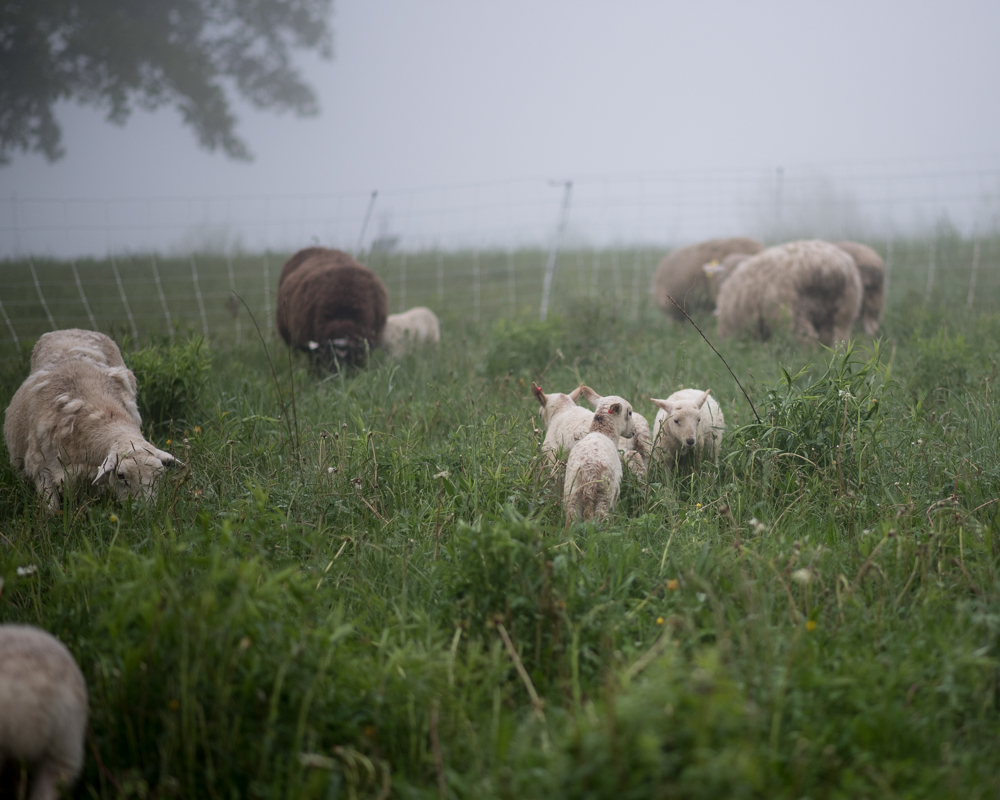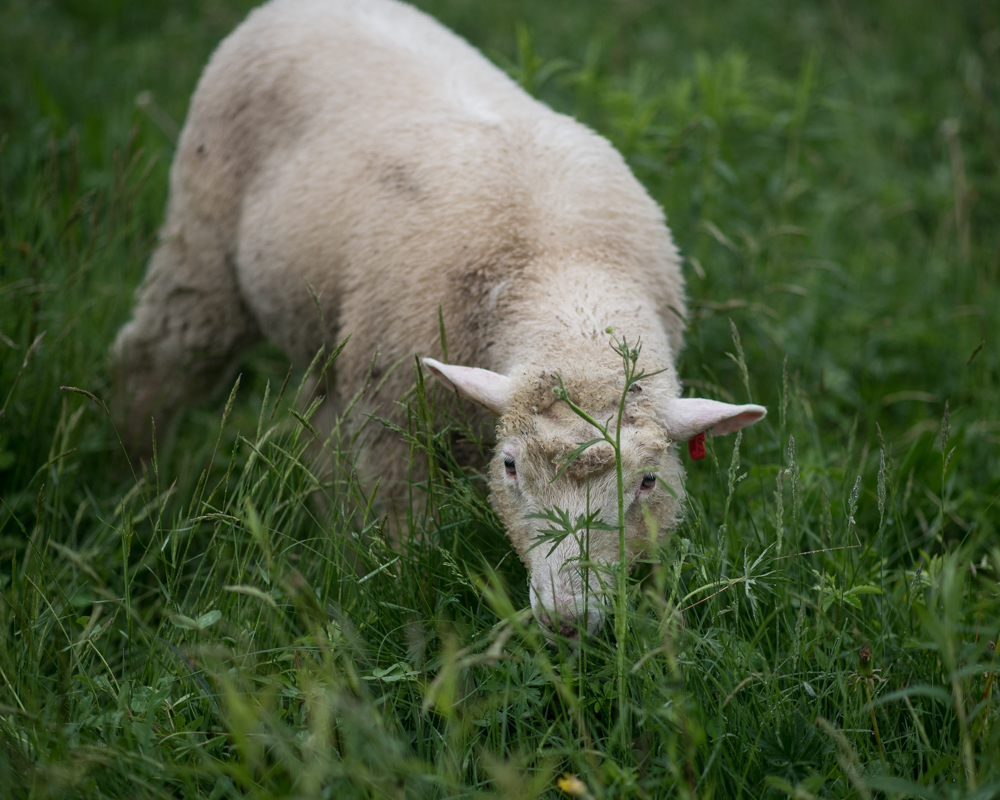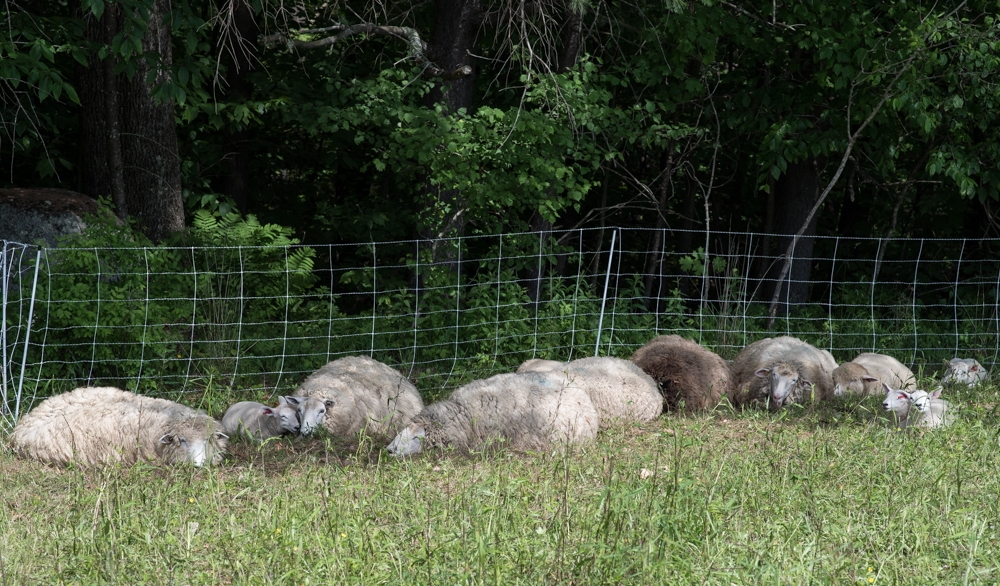 One of the lambs has been studying Cass’s cooling-off strategies, though she seems to have missed the part about the water.
One of the lambs has been studying Cass’s cooling-off strategies, though she seems to have missed the part about the water.
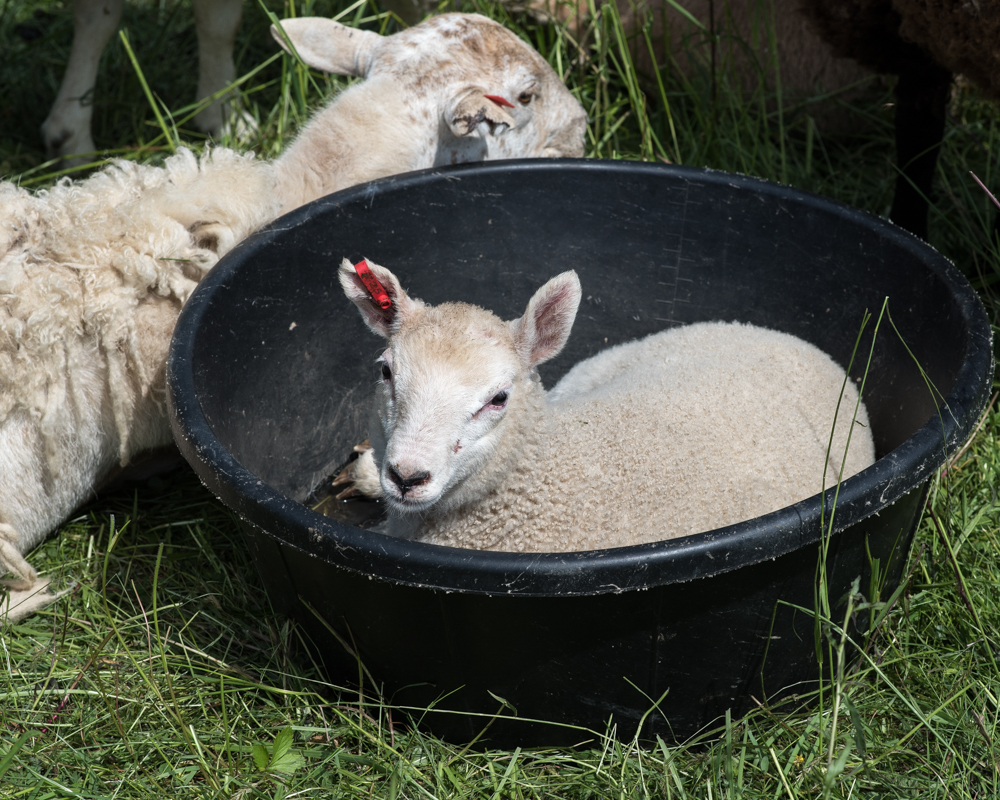
Tagged: Cass, heat wave, June, lambs, pasture, shade, sheep, stock tank, water trough
 One of the lambs has been studying Cass’s cooling-off strategies, though she seems to have missed the part about the water.
One of the lambs has been studying Cass’s cooling-off strategies, though she seems to have missed the part about the water.

Tagged: Cass, heat wave, June, lambs, pasture, shade, sheep, stock tank, water trough
I found this nest in the midst of the back pasture over the weekend.
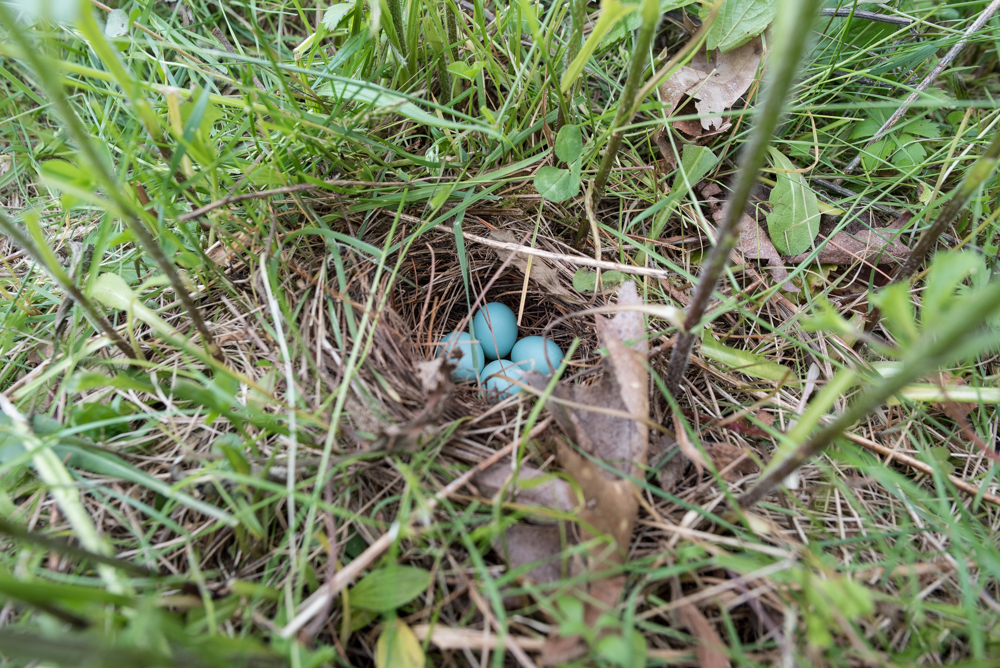
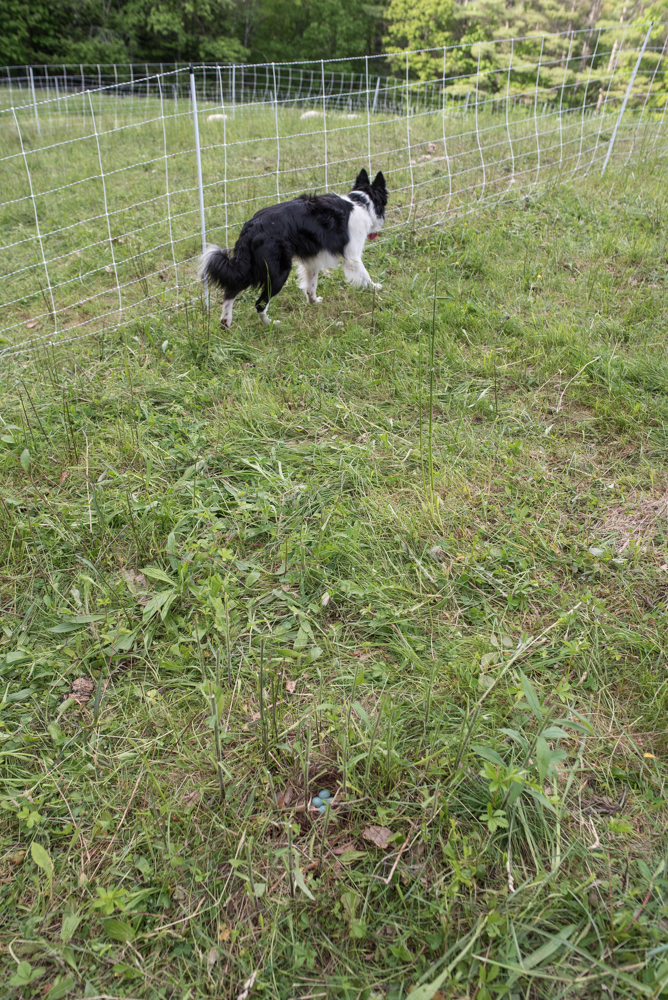
My first thought was to wonder what a robin was doing building a nest on the ground — I’ve only seen them nest a few feet up, in a tree or a building. The eggs looked right for robin, though perhaps a touch small, but then I realized that there was no mud lining the nest, a signature building technique of robins.
After some consultation with more-knowledgable friends, we decided that it was probably the nest of a hermit thrush, a close relative of the American robin. Hermit thrushes nest on the ground, the nest was constructed as I’d expect for hermit thrush, and the eggs, a tiny bit smaller than robin’s eggs, were a good match. The catch was that I’d only known hermit thrushes to nest in the woods, in a well-hidden location appropriate to their name, but the Cornell bird bible suggests that they are sometimes more catholic in their choice of location.
I think the maker of this nest chose the site before my sheep came through and shortened the grass. I’ve been watching the nest area in hopes of getting a positive ID, but haven’t seen anyone incubating the eggs; I fear that the grazing hordes were too much and mom abandoned it. Nevertheless, the woods beyond the nest spot are full of singing hermit thrushes (one of my very favorite bird songs!), so I feel reasonably confident in my ad hoc identification.
Tagged: atypical location, Birdsong, border collie, Catharus gutattus, eggs, grazing, Hermit thrush, Luc, nest, pasture, sheep
Electronet without the electrons is a purely symbolic barrier that sheep, dogs, and coyotes could easily push aside. And while I went on at some length yesterday about the physical challenges of setting it up, I’m also adept at failing to get the electrons to flow properly. The trouble arises in the Catch-22 embodied by electonet: I use it to divvy up sections of my pasture, an assemblage of tall grasses and other plants; but if the tall grass touches any of the conductive strands, the electricity flows to ground rather than through the fence.
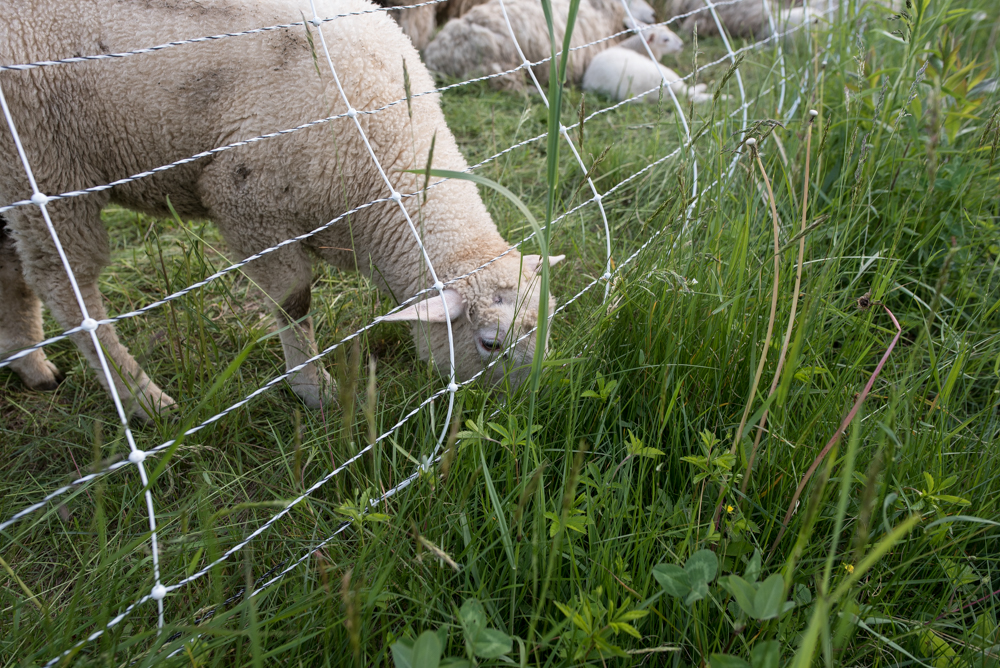
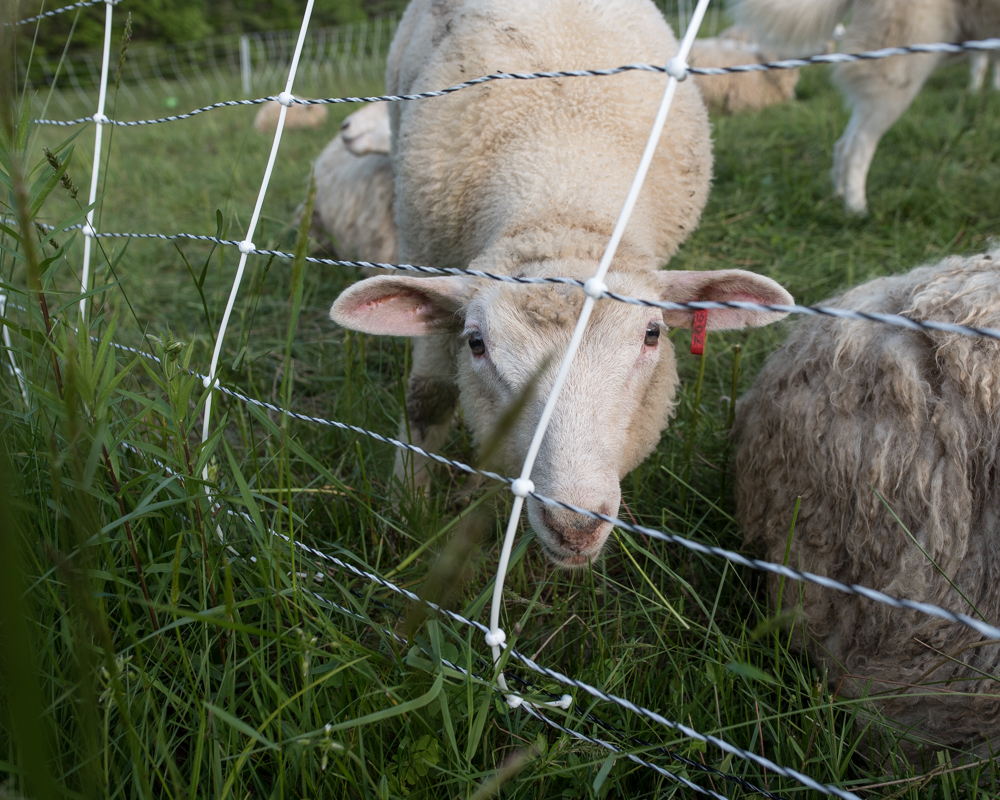
If I were an optimal shepherd, I would have a lawn mower with me out in the pasture, and I’d mow a strip of grass everywhere I wanted to run the electronet. With no tall grass shorting out the fence, I’d have 10,000 volts of deterrence running through it at all times. Instead, I take repeated measurements until I get a number I like.
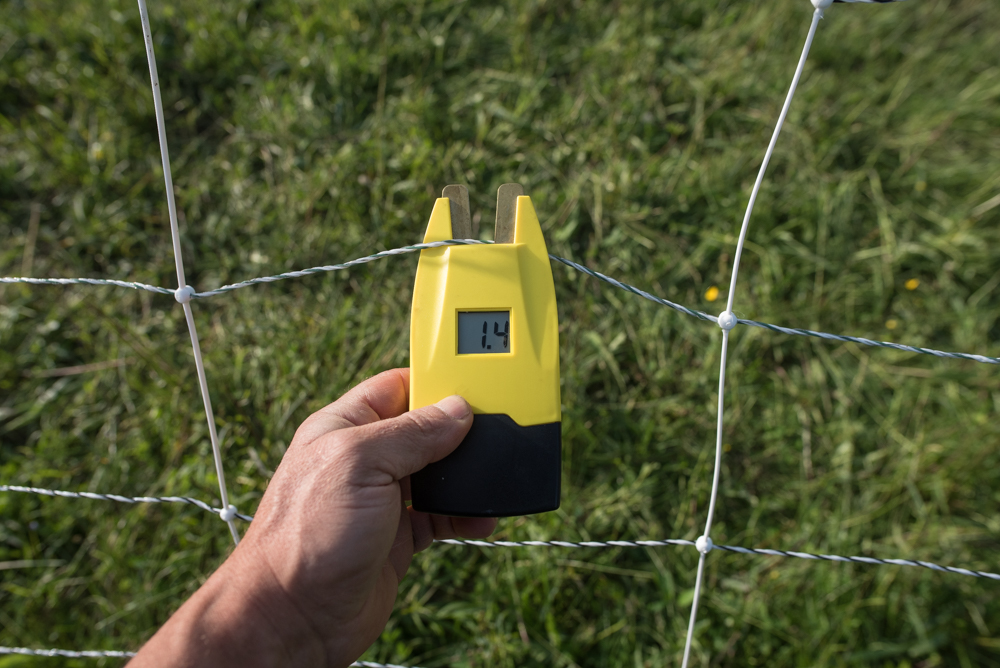
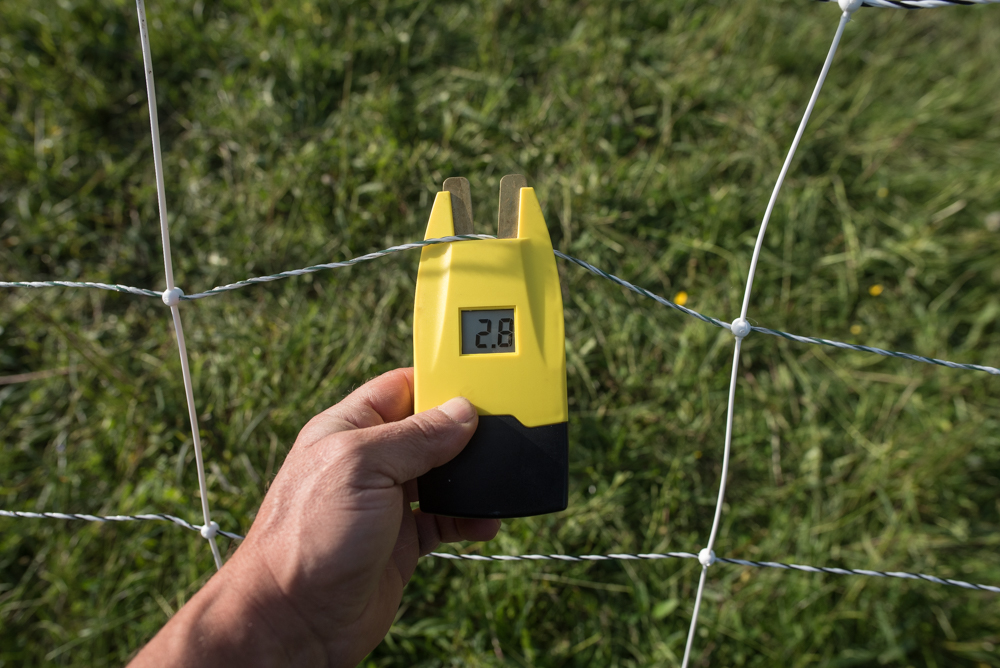 The meter reads in kilovolts, and 2kV is about the minimum to get a sheep’s attention through all its wool.
The meter reads in kilovolts, and 2kV is about the minimum to get a sheep’s attention through all its wool.
Tagged: deterrent, electricity, electronet, grass, ground, lambs, pasture, sheep, short-circuit, testing, threshold, voltage
Bill Fosher claims that eventually I’ll develop such muscle memory that electronet leaps unbidden from my arms and sets itself into the ground. I’m not there yet. The portable electric fencing I use to enclose grazing areas for the flock is a crucial part of my operation, but it’s also become my principal preoccupation and adversary. It’s a straightforward enough system: a solar fence charger and rolls of plastic net fencing with stainless steel conductors woven through.
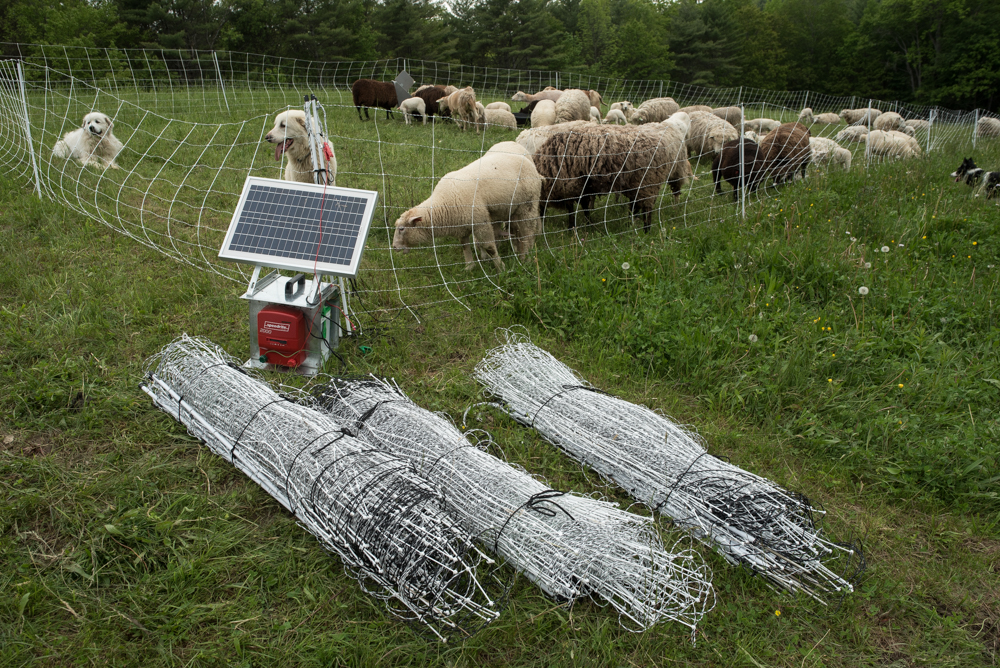 The details, though, reveal that the system was designed by sadists. The rolls of net are sized so that they can be comfortably carried and deployed by someone 6 inches taller and 30% stronger than the one doing the work. The net itself is designed like a ecologically friendly fishing net, allowing squirrels to pass through unimpeded but optimized to snare farmers’ footware. And the fence charger has a handle temptingly located in such a way that no anatomically intact human could use it.
The details, though, reveal that the system was designed by sadists. The rolls of net are sized so that they can be comfortably carried and deployed by someone 6 inches taller and 30% stronger than the one doing the work. The net itself is designed like a ecologically friendly fishing net, allowing squirrels to pass through unimpeded but optimized to snare farmers’ footware. And the fence charger has a handle temptingly located in such a way that no anatomically intact human could use it.
I’ve been setting up big squares of electronet — 164 feet to a side — and then subdividing them into 7 strips, each worth about 12 hours of grazing. This morning I moved the sheep in to the last strip of the previous square, so this evening I needed to set up a new one to start the 3½ day cycle over again. I set up the perimeter first, making sure that my corners all met up before setting the fence upright.
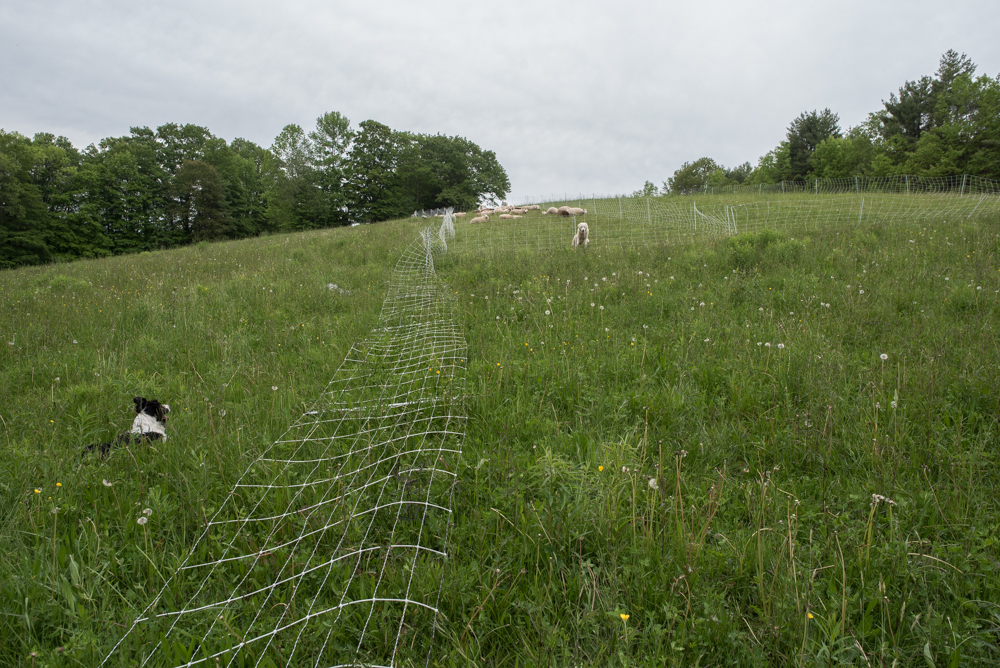 When the big square was complete, I set off the first grazing strip.
When the big square was complete, I set off the first grazing strip.
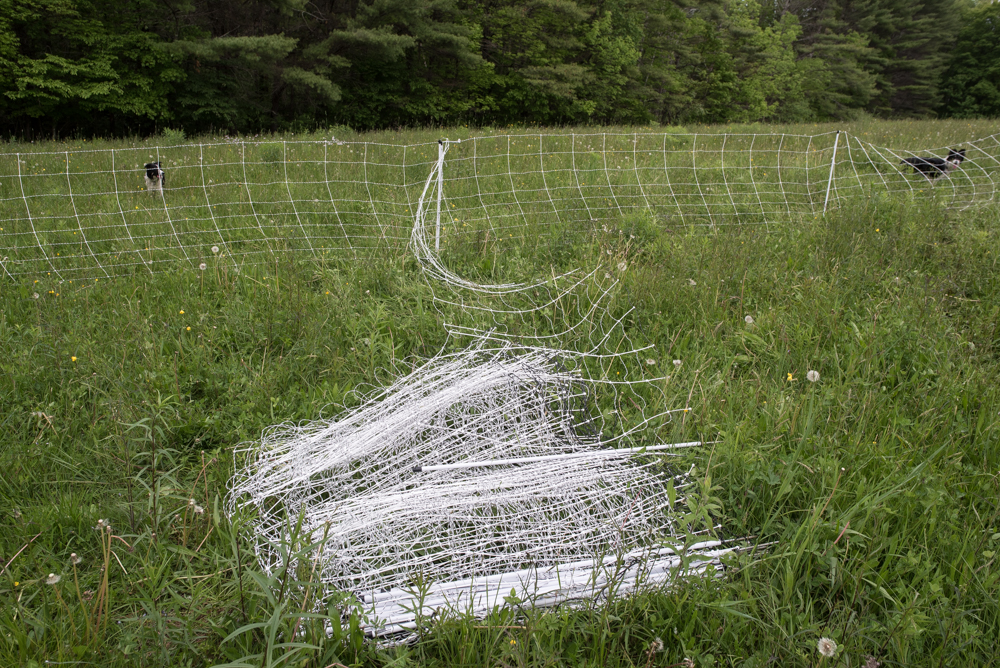
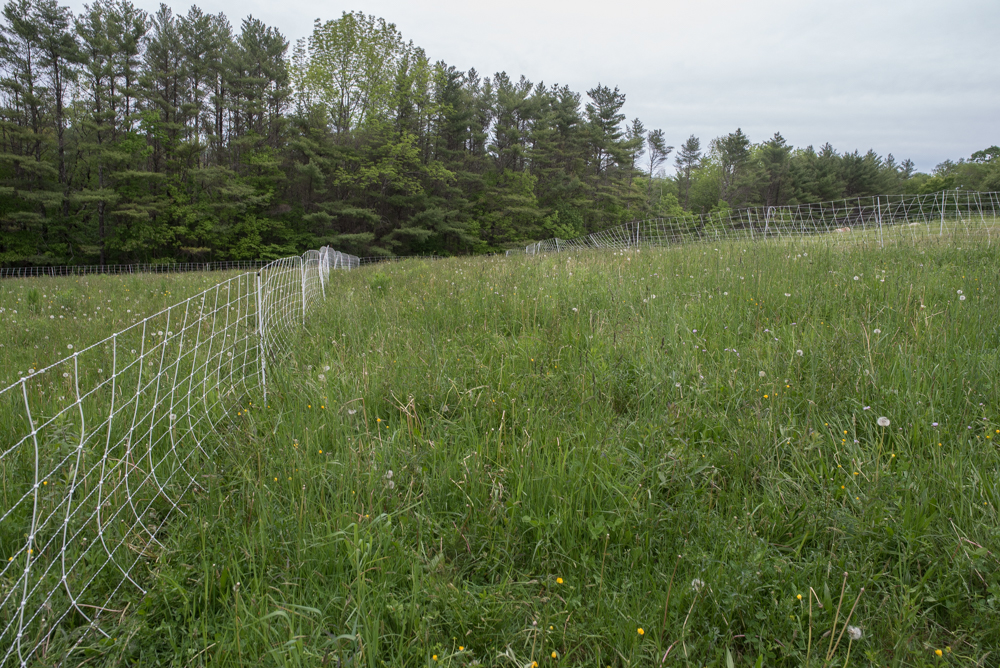 And then moved the sheep down to the fresh pasture.
And then moved the sheep down to the fresh pasture.
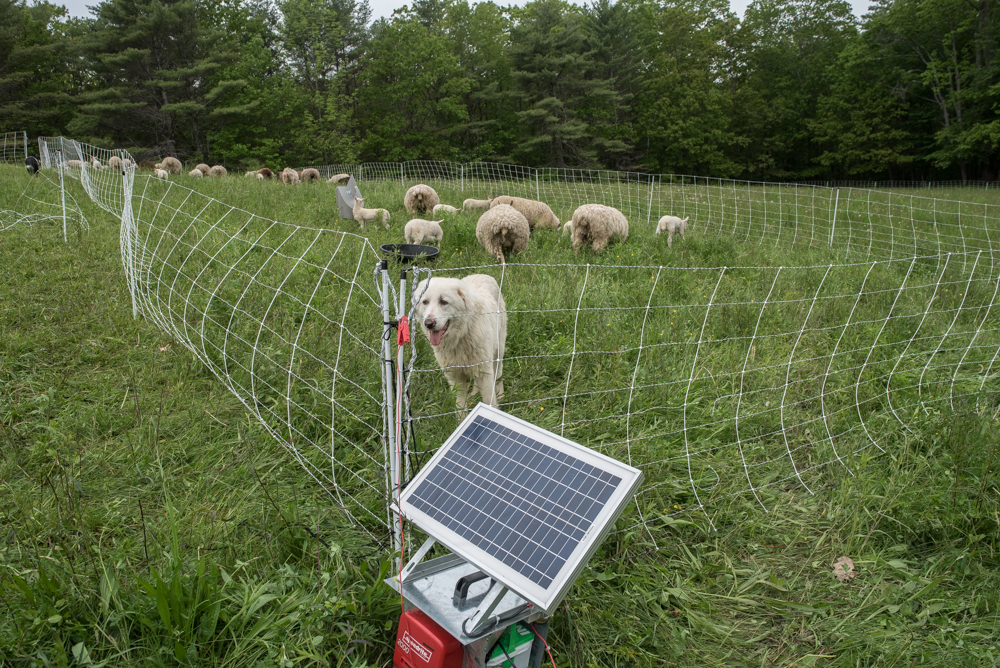 If the sheep eat as much as I expect over night, I’ll move them to the adjacent strip in the morning. Despite my kvetching, I only trip and fall on the net every third or fourth day now. Bill is still much faster than me setting it up, but I’m slowly gaining on him.
If the sheep eat as much as I expect over night, I’ll move them to the adjacent strip in the morning. Despite my kvetching, I only trip and fall on the net every third or fourth day now. Bill is still much faster than me setting it up, but I’m slowly gaining on him.
Tagged: Bill Fosher, bravo, Cass, Chloe, electronet, grazing, pasture, rotational grazing, sadists, sheep, solar energizer, Wellscroft
My daily rhythms with the sheep are now all about grazing rotations — how big an area to give them, how often to move the fence, worrying whether I’m doing it right. The big picture is that sheep consume pasture most efficiently if they’re a little crowded and hungry, so they’re less likely to be picky and instead eat a bit from all of the available plants. Pasture is most productive if it’s grazed uniformly for a short time (ideally before it goes to seed) and then left to recover. The grass is also happier if the sheep don’t eat too much — 6-8″ of remaining leaf height allows it to continue to photosynthesize efficiently and grow back quickly.
My flock of 65 sheep is constant*, but the quality of pasture varies across the farm — some areas support much more plant density than others. So every time I set up a grazing area, I’m trying to figure out how much sheep food it contains and how long the sheep should stay so that they eat just enough but not too much. My goal is to move them twice a day, the sweet spot between efficient grazing and shepherd insanity, according to Bill Fosher. I’m starting to get better at all the necessary guesstimates, but I still sometimes let the sheep overgraze (too much time for the available forage, so they chew the plants down too far for quick pasture recovery) or undergraze (too much area for the number of sheep, so that they start to eat selectively, overgrazing their favorites and ignoring the plants they like less, the all ice cream and no broccoli approach).
This morning, I erred a bit on the side of overgrazing, leaving the sheep a few hours longer in their overnight section than I should have. Aside from a few mature grass stems that they disdain, they had eaten everything down to about 4 inches.
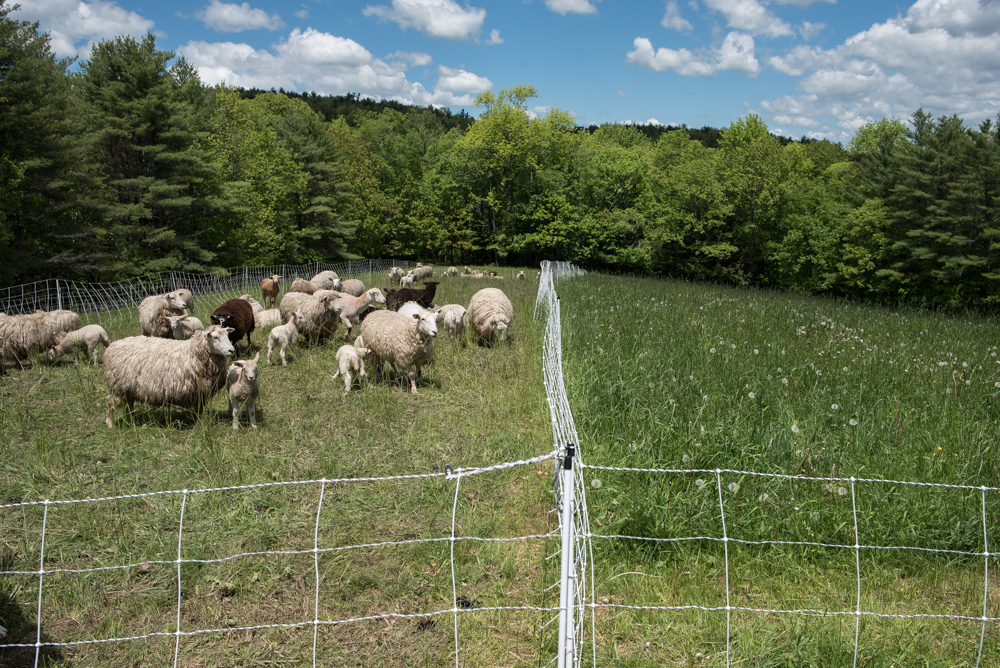
They get very antsy as they sense that I’m about to let them move to the new section. I have the electricity turned off to the fence at this point so I can open a section without getting zapped, and I’m afraid that the sheep are starting to figure out when the fence is electrified and not. I worry that one day they’ll just push their way to freedom if I don’t move them quickly enough. Bravo and Cleo were leading the charge this afternoon.
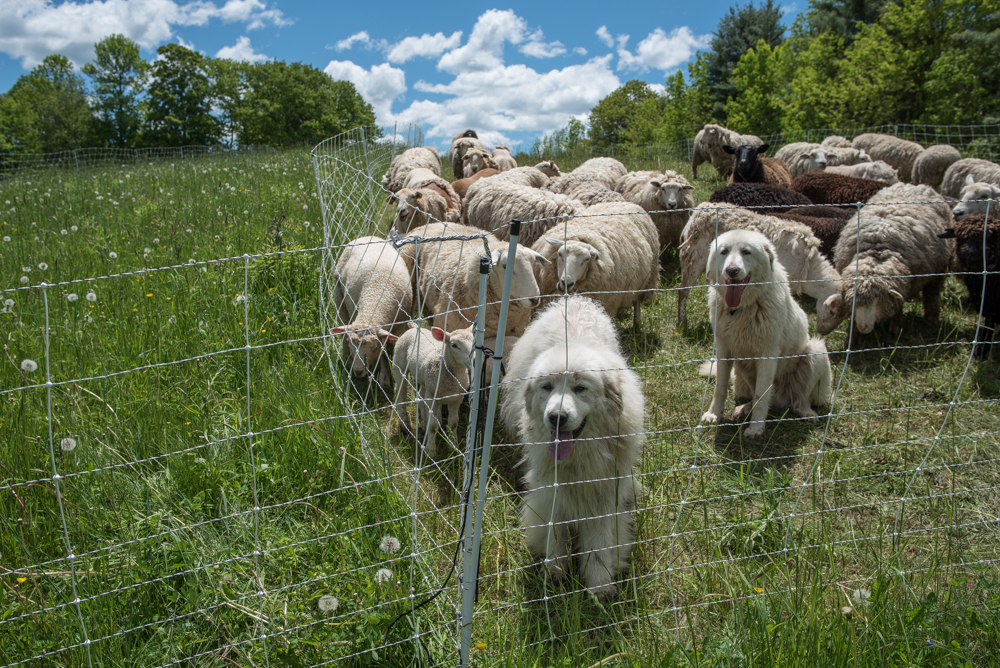
And once the sheep are in the new grass, all the tension disappears.
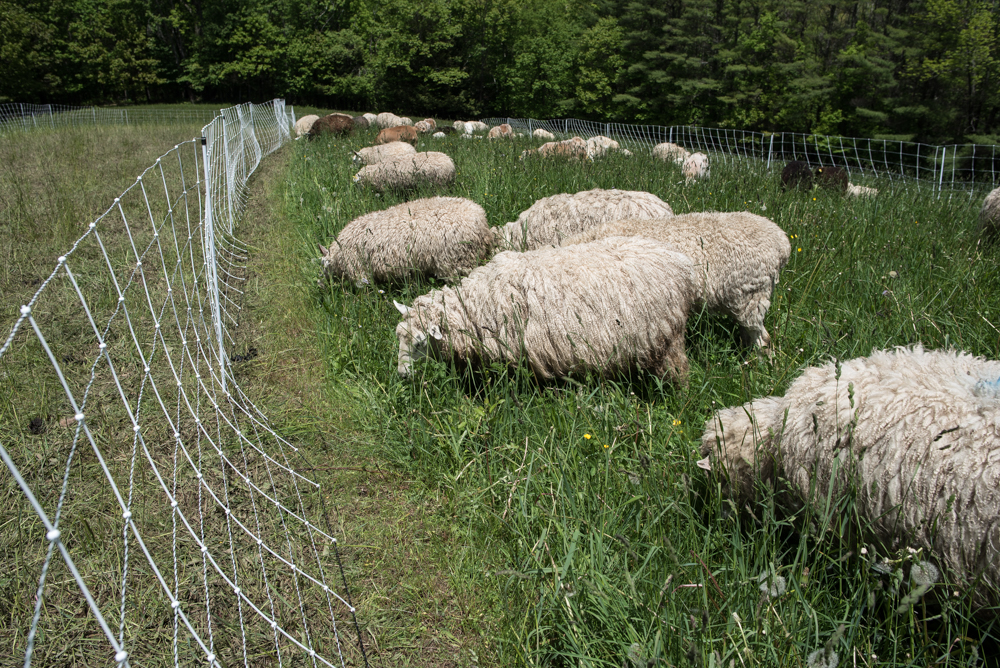
____________________
*While the number of sheep is constant, their consumption of forage really isn’t. As the lambs grow, their rumens start to develop and they start eating grass in addition to milk. And the ewes’ lactation volume changes as the lambs grow (peaking around 45-60 days after birth), so their nutritional needs change accordingly. All the variables are in flux.
Cleo continues to surprise me. At her previous farm, she was slow to warm to new people, often needing several encounters before she felt comfortable enough to approach someone unfamiliar. Since she’s gotten here, she seems much more accepting of folks I introduce to her. My friend Kathy came to visit yesterday, and within seconds of meeting Cleo, they were best buddies.
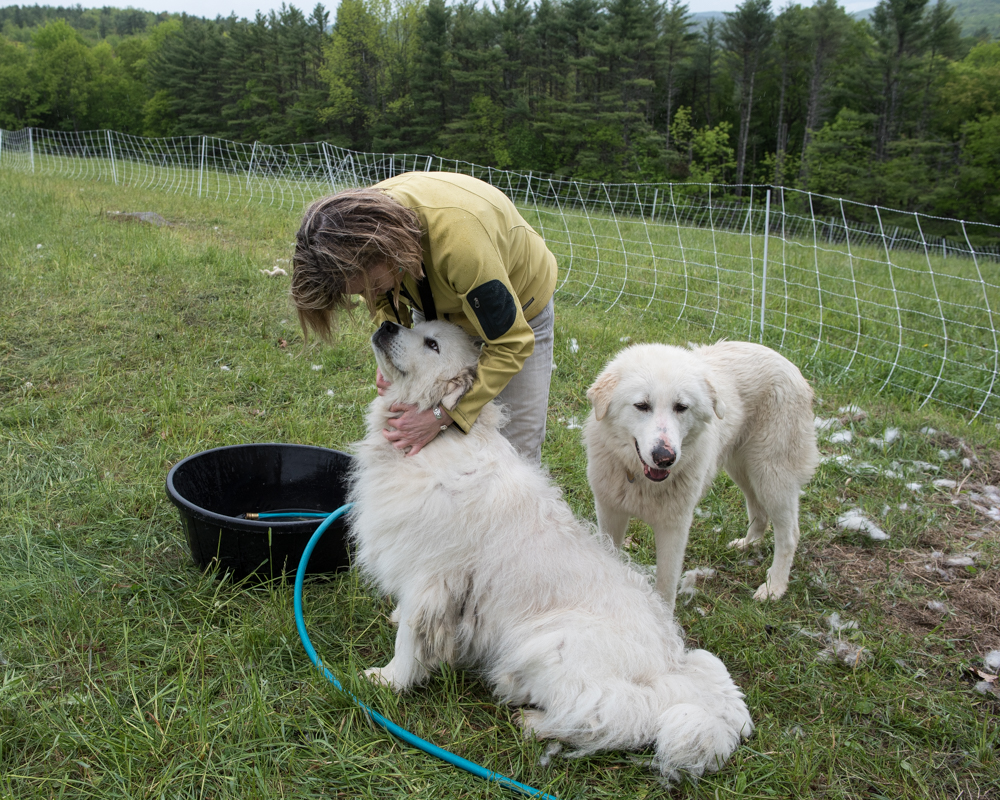
I’m curious if the change of circumstances somehow relaxed Cleo (not what I would have expected!); or if so far she feels less burden of responsibility for this new farm and its residents, and so she can be more trusting of visitors. It often takes an adult dog a full year to completely settle into a new life, so I imagine her behavior will continue to evolve.
Tagged: bravo, Cleo, Dogs, electronet, Great Pyrenees, Kathy, livestock guardian dog, maremma, pasture, settling in, smile, visitor
The rams have been in their getting-acquainted chamber in the barn for 10 days, so I figured that they had worked out whatever rams need to work out among one another. When I let them out to start lawn-mowing duties, they behaved themselves like fine young gentlemen. Lefty and his mom seemed to fit right in as well.
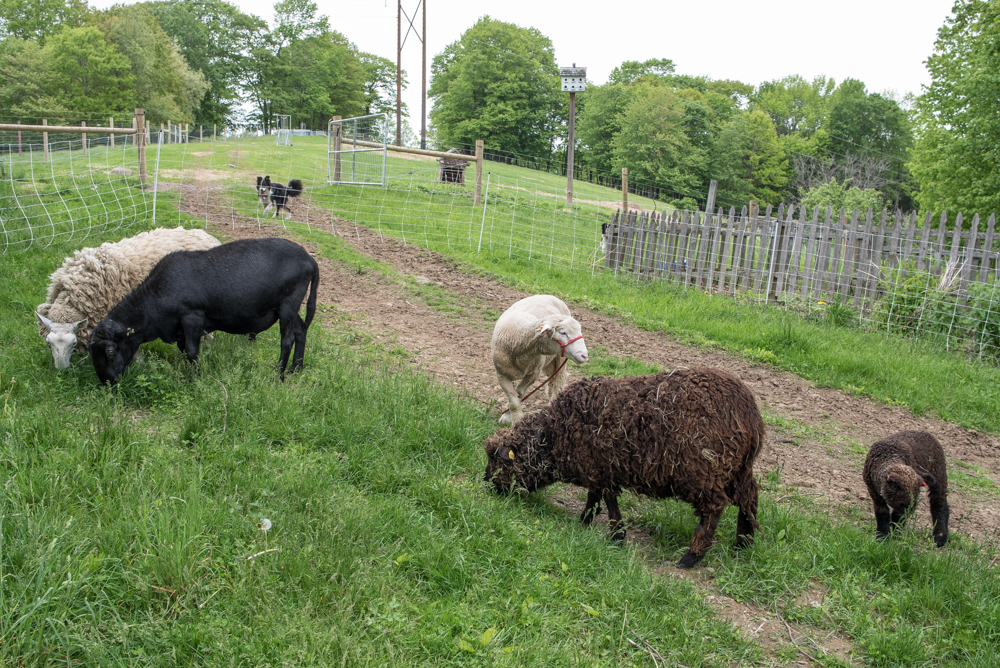
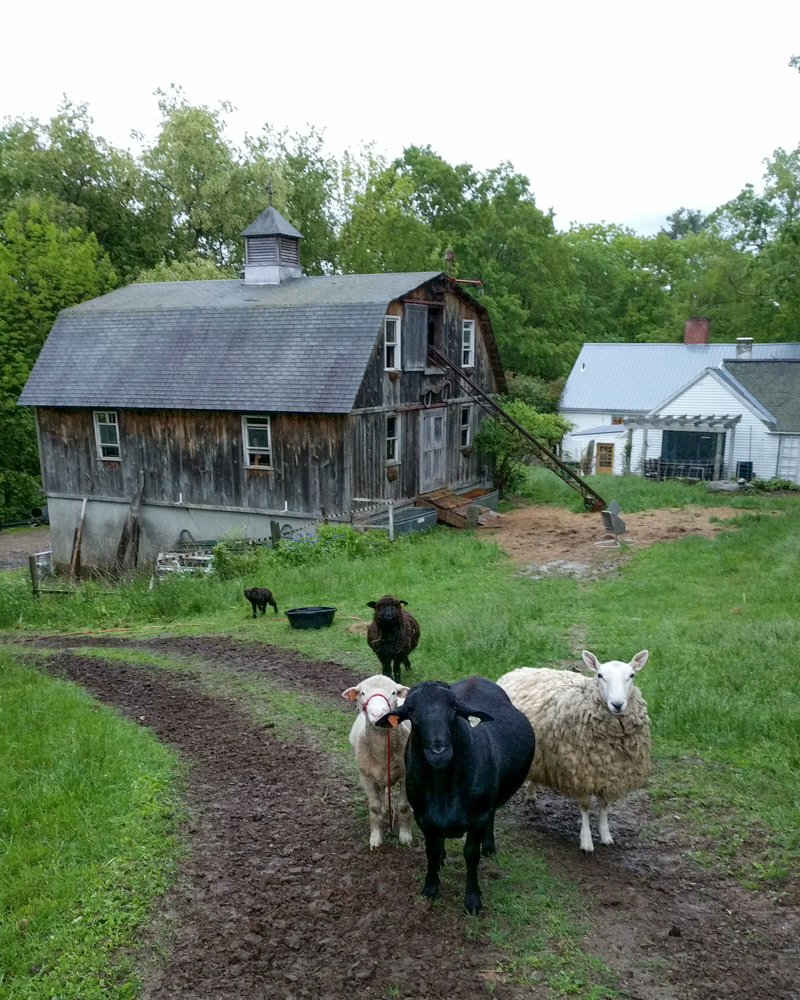
Tagged: #106, cheviot, Dorset, electronet, Katahdin, lawn-mowing brigade, Lefty, pasture, rams, Romney
I’m learning that each season has its preoccupation. In winter, I worried if the snow or ice would keep me from bringing hay to the flock, and during lambing, I worried about lambing. In the early spring, I doubted that the grass would ever start growing (it did), and now I worry how long the grass will last.
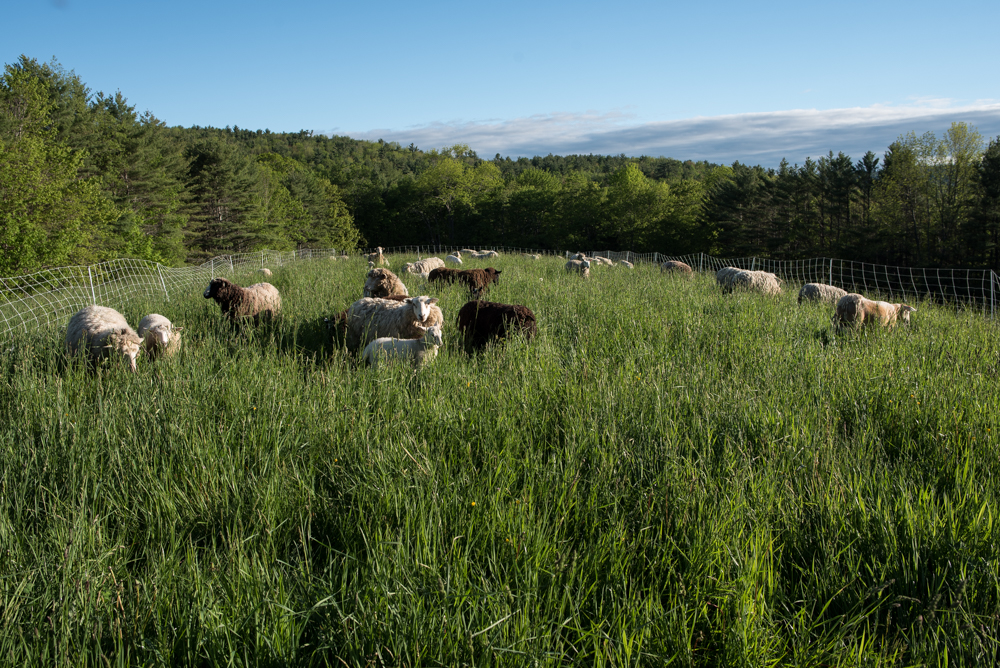 Parts of the back fields now have grass tall enough to hide lambs in, but the sheep also manage to chew through it at a fantastic rate. I’m still figuring out how much they eat every day, and constantly doing calculations in my head about sheep-days per acre, and acres of pasture not yet eaten. I usually come to the conclusion that I either will or won’t have enough. The fields here have been overgrazed and underfed for many years, so I’m trying to feed my sheep while still nurturing the pasture back to health (more on this soon).
Parts of the back fields now have grass tall enough to hide lambs in, but the sheep also manage to chew through it at a fantastic rate. I’m still figuring out how much they eat every day, and constantly doing calculations in my head about sheep-days per acre, and acres of pasture not yet eaten. I usually come to the conclusion that I either will or won’t have enough. The fields here have been overgrazed and underfed for many years, so I’m trying to feed my sheep while still nurturing the pasture back to health (more on this soon).
Several friends and neighbors have offered to let my sheep graze some of their fields for part of the summer, additional grass that makes everything work for my sheep during the early going, but I hadn’t quite figured out how to move my sheep around Sullivan. I have fantasies of walking the flock along public roads to get across town, but I fear neither my herding skills nor the Town of Sullivan is ready for this challenge yet. I have an acquaintance who’s offered to move my sheep in his stock trailer, but at $100 per move, it would be cheaper to feed hay to the flock and keep them home. Earlier this week, Bill Fosher alerted me to an older stock trailer for sale in his town of Surry, and today I brought it home with Bob Jones’s help.
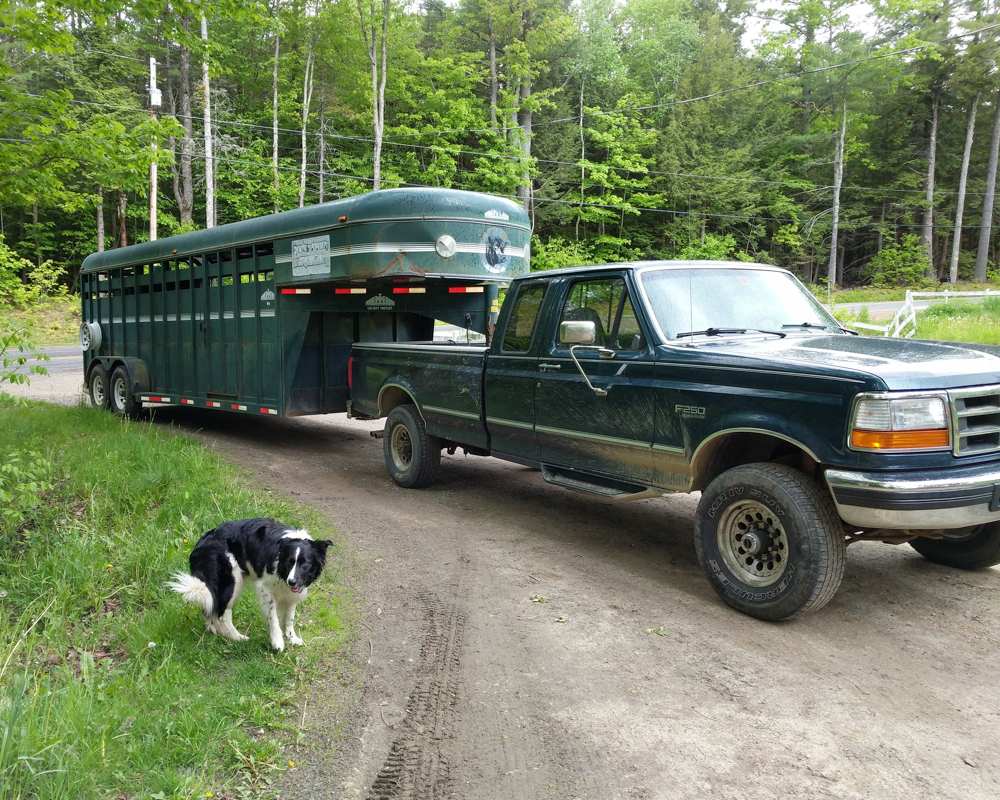
The last step is to sell my little truck so I can buy Bob’s big truck, and then I’ll have the capability to get my sheep wherever there’s grass to be had.
Tagged: Bill Fosher, Bob Jones, Cass, enough, Ford F-250, grass, grazing, Moritz, neighbors, pasture, sheep, stock trailer, Sullivan
My friends Nancy and Mary Lou Kaufman were up for a visit yesterday, and Nancy provided some evidence that I’m not just making up this farming stuff.
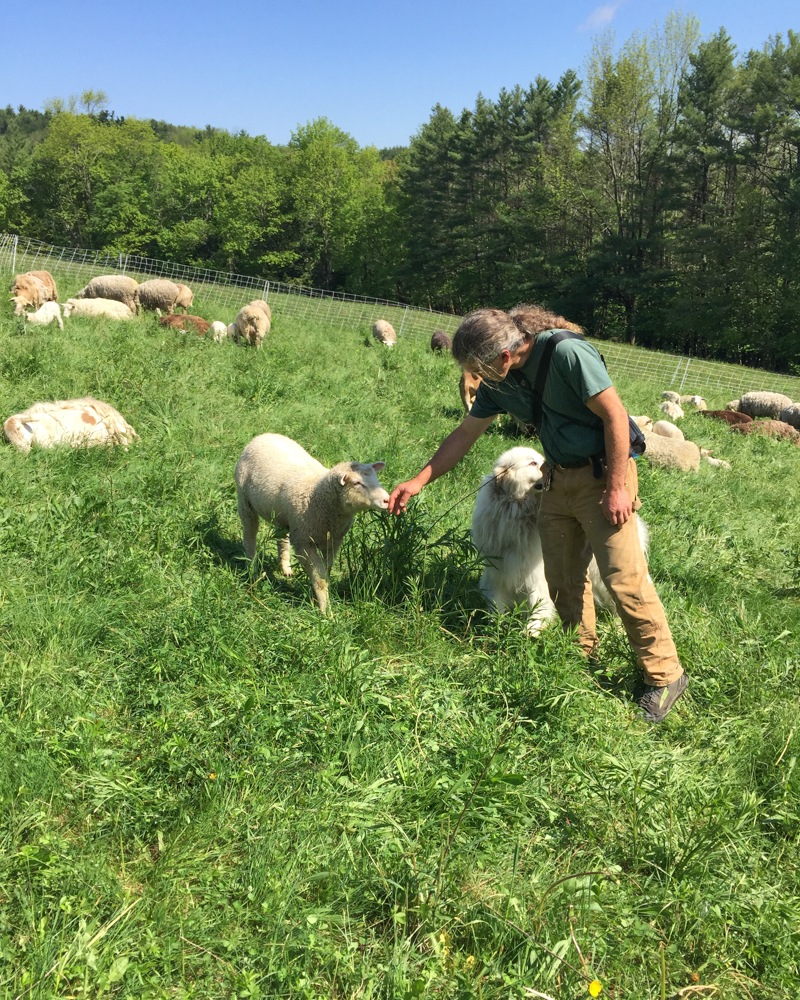
Tagged: back field, Cleo, electronet, lambs, Milton Trimitsis, Nancy Kaufman, pasture, sheep
It was pea-soupy on the farm this morning after last night’s storm.
